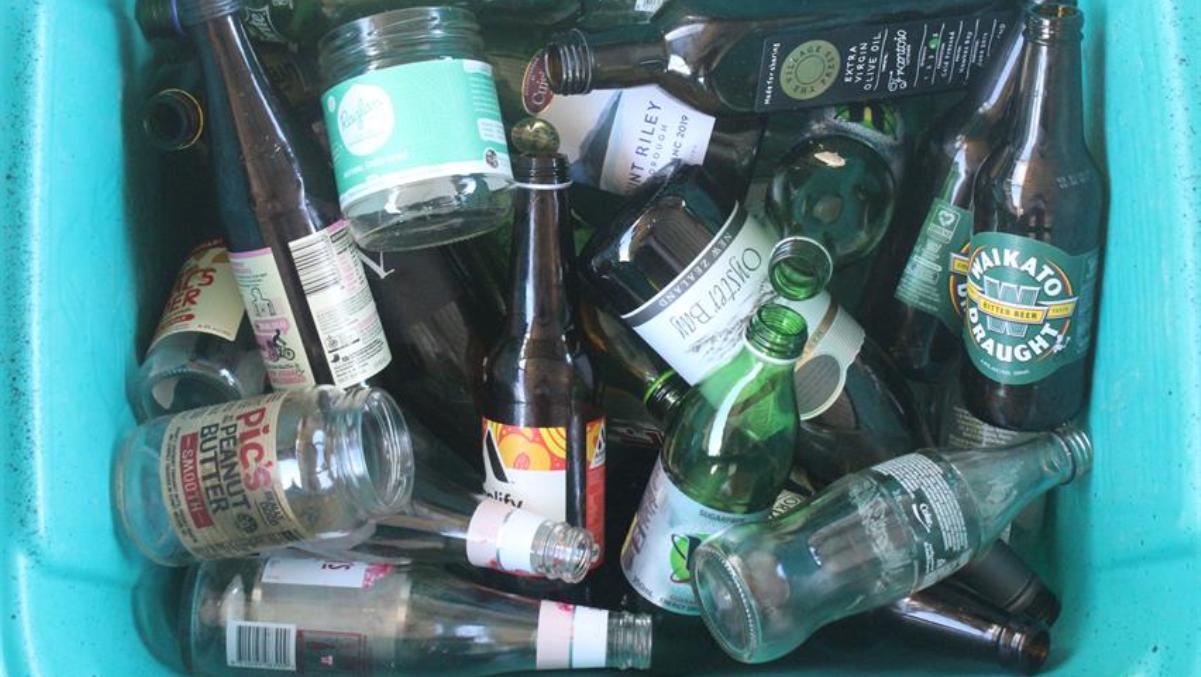Update 15th Dec. People have asked for guidance on what 1, 2, 5 plastics that are still being collected are. Here it is from the experts at Waikato District Council
Plastics type #1 (PET)
PET is one of the easiest plastics to recycle and therefore has good market value. It is most commonly used for soft drink and water bottles, and for a wide range of clear and coloured drink bottles. Other uses are common household items including a wide range of plastic jars, cleaning containers, personal care bottles, some meat trays, punnets for berries and tomatoes and plastic clam shells for muffins and baked goods.
Plastics type #2 (HDPE)
Plastic #2 HDPE is also easy to recycle. It is most commonly used for milk and cream bottles, some ice-cream containers, juice bottles, shampoo, cleaning and detergent bottles.
Plastics type #5 (Polypropylene)
PP is generally semi-rigid and translucent with good resistance to chemicals and solvents as well as heat.
PP plastic products include things like medicine bottles, some takeaway containers, bottle caps, and plastic cutlery.
Regarding lids – the below is from a WasteMINZ recommendation report for MfE where it recommends that lids be thrown in the rubbish:
Lids
Recommended that lids are not collected through kerbside collections.
Issues with lids include:
- ∙ They get stuck in equipment
- ∙ Blow away in wind
- ∙ Slip through trammel and contaminate glass
- ∙ Can be made of multiple materials
- ∙ Larger lids, such as ice cream containers, can be sorted as paper
- ∙ Lids off means more chance the container will be empty
- ∙ OI specifies no lids for glass bottles and jars.
Due to stricter controls being put in place by processors who receive recycling from Waikato District Council waste contractors, lids from plastic and glass containers need to be taken off and put in the rubbish.
The lids are typically a different material, will contaminate glass and plastic recycling and can get stuck in moving machinery used to process recycled product.
Lids ending up in landfill is the lesser evil, rather than undermining the quality of a glass shipment.
Quality control measures at recycling process also mean the following needs to be adhered to:
SEPARATE RECYCLING
Glass recycling must be separated from plastic and cans. This change was started during the COVID-19 lockdown earlier this year.
The reasons for the separation are two-fold: to improve health and safety for waste collectors and to improve the quality of recycling going to the processors.
So, it’s glass in one crate, plastic and tins/cans in the other.
Please note, if you don’t have two crates at your property you can do one of two things:
Alternate your recycling. Put out plastics/tin one week and glass the next.
You can buy a crate from the Council for $18.50. All properties eligible for a kerbside collection service were issued two crates back in 2016. While we acknowledge crates may have gone missing since then, we cannot let the general ratepayer subsidise the cost of buying in more crates, so they need to be paid for by the user.
CLEAN, CLEAN, CLEAN
Another reminder that all recycling needs to be rinsed clean before being put into crates. Again, this is due to processors needing clean product so that the recycled material can be used again.
PLASTICS 1,2 and 5
Only plastics with recycling numbers 1,2 or 5 can be put in a recycling crate – if it has a 3,4,6 or 7 number it needs to go in the rubbish bag.
Up to now Xtreme Zero Waste has been accepting plastics with numbers 1 through to 7 on them but they will be changing to only 1,2 and 5 from December 14 this year.
PAPER/CARDBOARD
This should be put next to the crates either in cardboard box or paper bag. Max size is 50cm x 50cm x 50cm.
